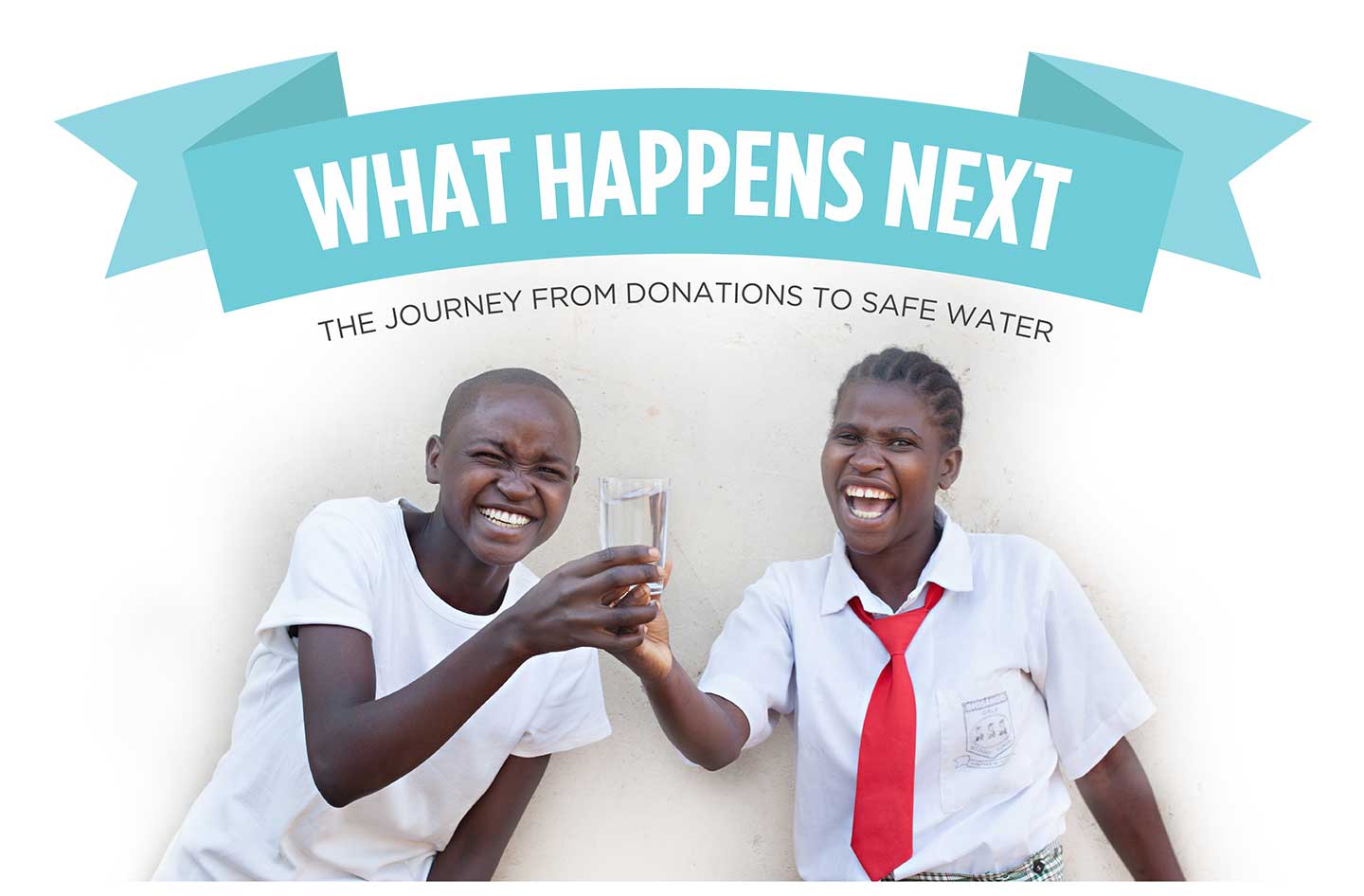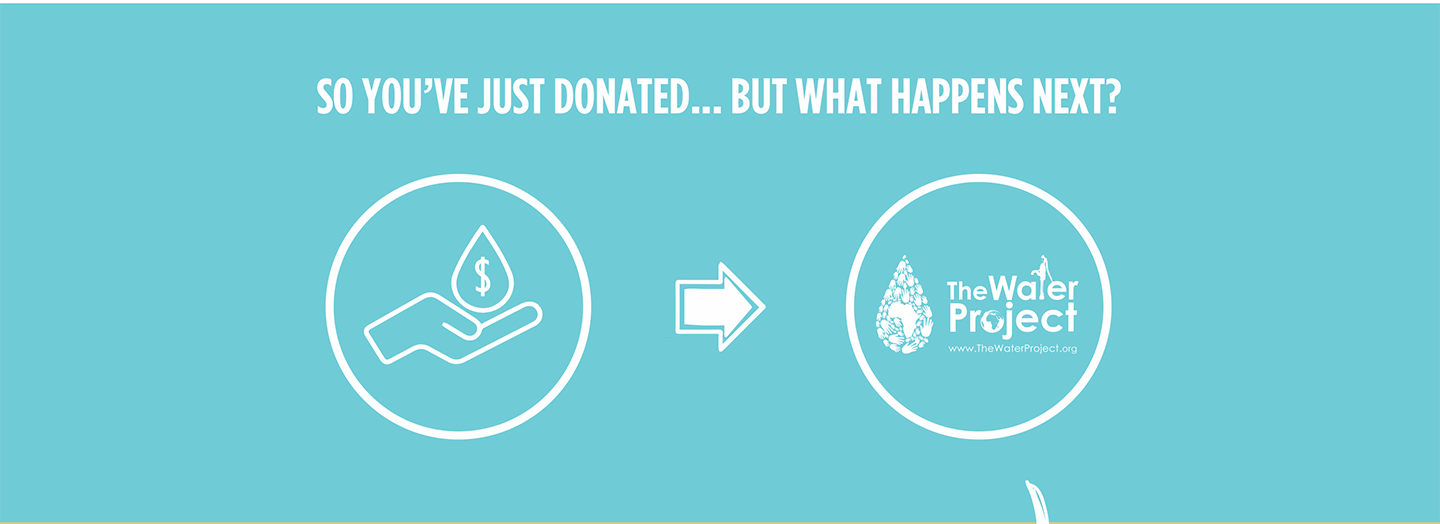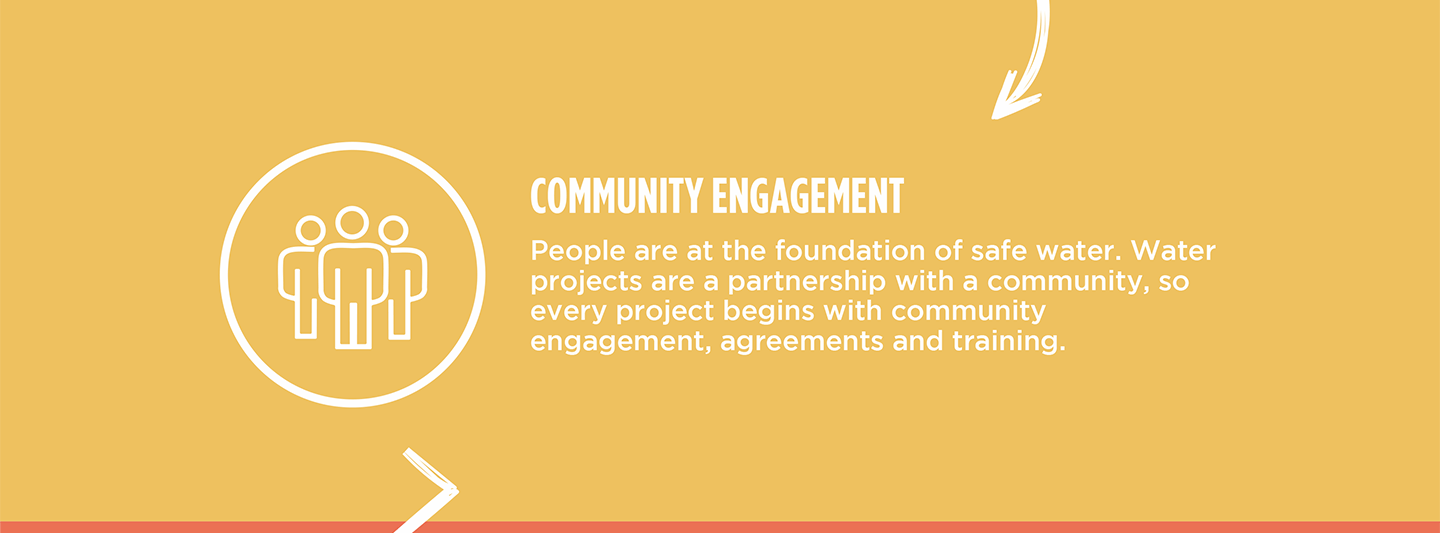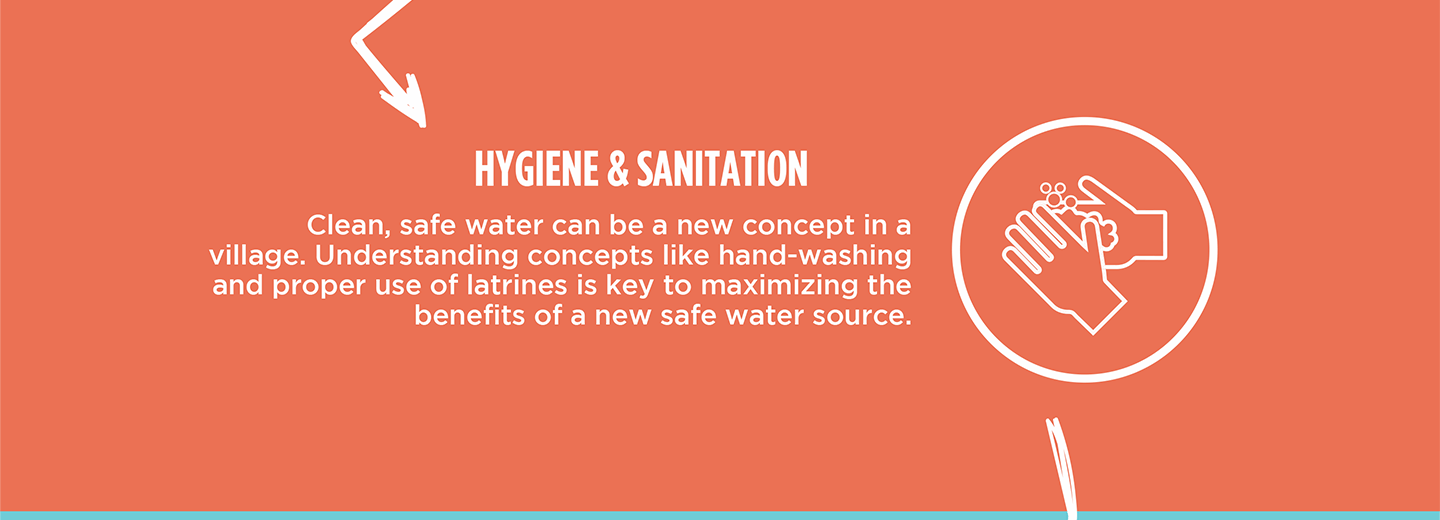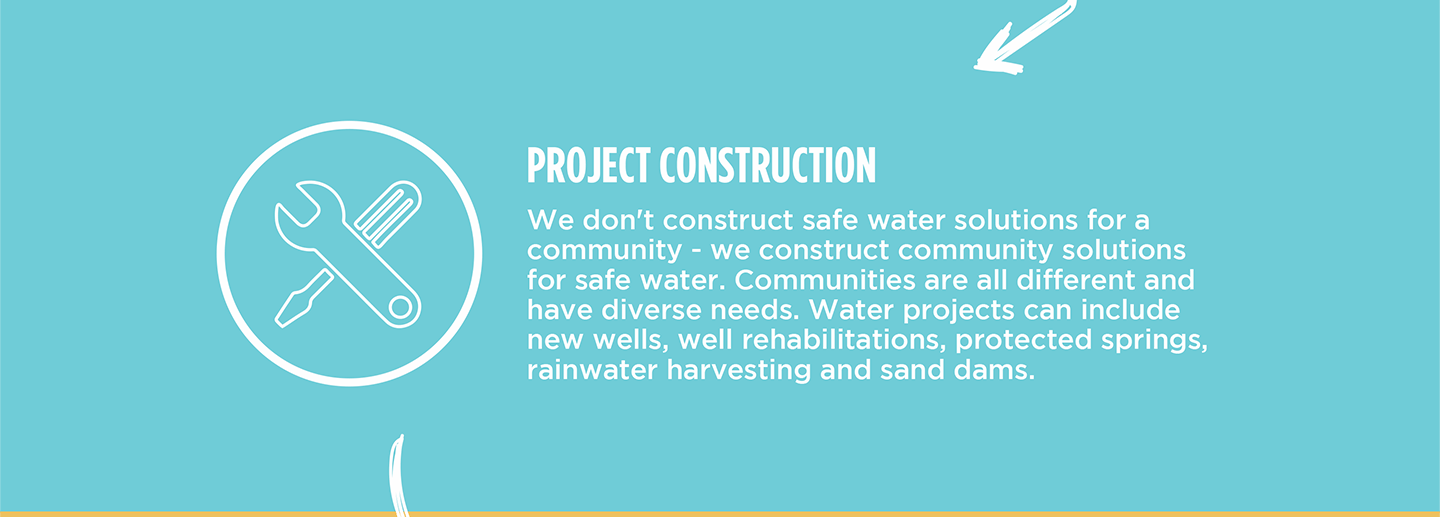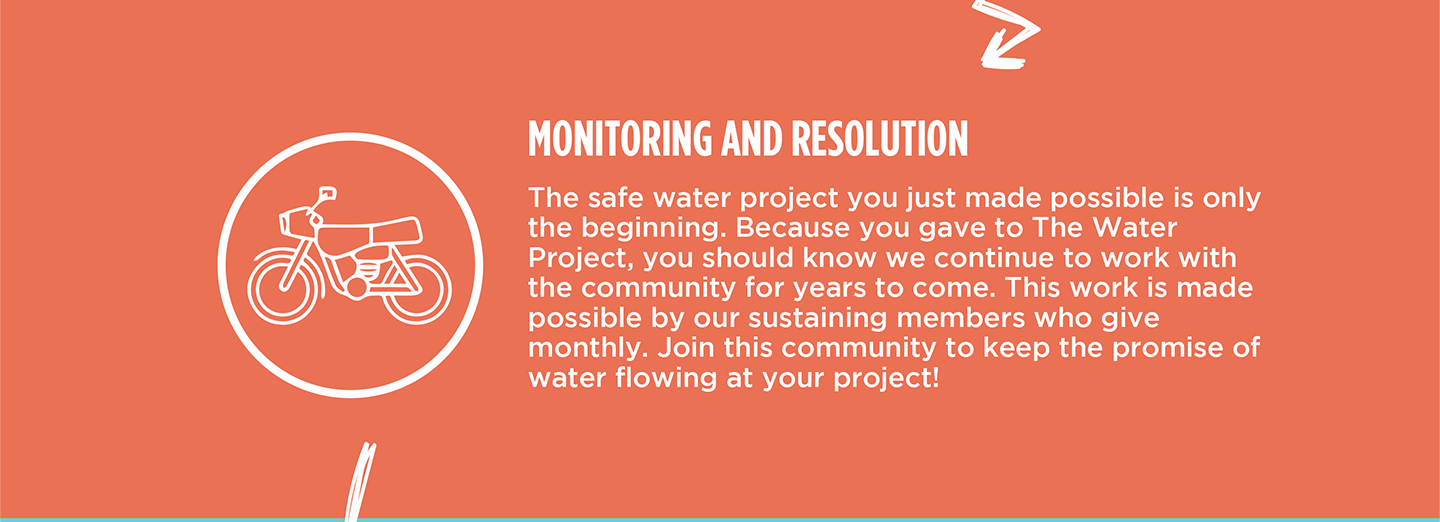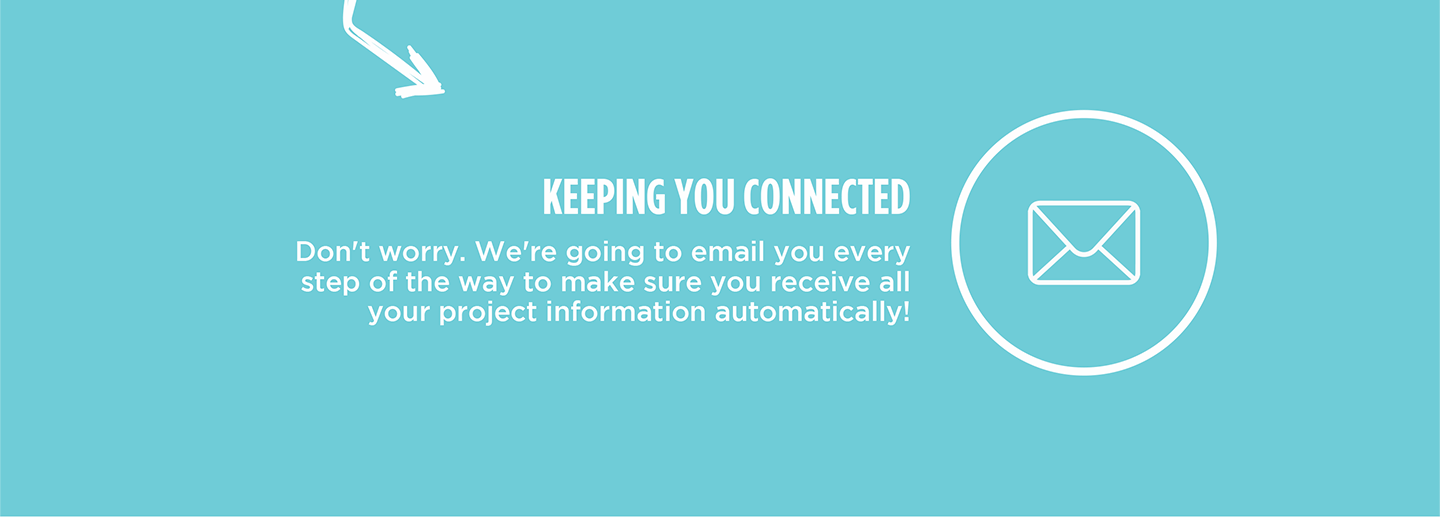The Kyabakoto Community, home to 250 people, needs a safe water source nearby. For the past ten years, they have been experiencing a water crisis. Community members must walk at least an hour round-trip to access water and return home.
There is a well in a neighboring community, but it is so overcrowded that people are often delayed even further, and it experiences frequent breakdowns. As a result, people often make the impossible choice to collect water from an open dam instead to save time. They know the water is contaminated, and they are risking their health, but their urgent daily tasks weigh heavily on them, creating little choice.

Evelyne Kansiime.
Thirty-five-year-old Evelyne Kansiime is familiar with the daily worry of drinking water, which she knows will make her and her family members ill.
"I am deeply worried because, at times, my family and I fall sick after using water from the dam, which is often contaminated and unsafe for drinking or household use. I believe that drinking that water is unsafe, but because water is essential for life, I feel compelled to use it regardless of the risks," Evelyne lamented.

Evelyne collects water from the contaminated dam.
"I suffered from diarrhea after drinking dam water and was later admitted to the hospital, where doctors diagnosed me with typhoid caused by the contaminated water. I sought treatment from doctors, which required a lot of money to purchase the necessary medicine for typhoid, placing a heavy financial burden on the family during the illness," Evelyne shared.
Being ill not only steals the family's health, but it also takes other critical resources.
"I spent all the money at the hospital that was originally meant for her children's school fees, which forced one of her children to miss school during that period due to lack of funds," shared Evelyne.

Sadly, Evelyne and her family have little hope of making progress without an intervention. Yet, when she imagines what it would be like to have a nearby, safe water source, she dreams of a very different life.
"[We] will be able to collect water quickly, helping to prevent family conflicts and breakdowns. There will be a reduced risk of waterborne diseases. The danger of falling into the dam will also be minimized. Water is life, and when it is safe and clean, it greatly enhances health, well-being, and overall quality of life for individuals and families," she declared.
Steps Toward a Solution
Our technical experts worked with the local community to identify the most effective solution to their water crisis. They decided to drill a borehole well, construct a platform for the well, and attach a hand pump.
Well
Abundant water often lies just beneath our feet. Aquifers—natural underground rivers—flow through layers of sediment and rock, offering a constant supply of safe water. A borehole well is drilled deep into the earth to access this naturally filtered and protected water. We penetrate meters, sometimes even hundreds of meters, of soil, silt, rock, and more to reach the water underground. Once found, we construct a platform for the well and attach a hand pump. The community gains a safe, enclosed water source capable of providing approximately five gallons of water per minute. Learn more here!
Community Education & Ownership
Hygiene and sanitation training are integral to our water projects. Training is tailored to each community's specific needs and includes key topics such as proper water handling, improved hygiene practices, disease transmission prevention, and care of the new water point. Safe water and improved hygiene habits foster a healthier future for everyone in the community.
A Community-Wide Approach
In Uganda, we use a Community-Led Total Sanitation (CLTS) approach, which involves several meetings where community members evaluate their own hygiene and sanitation practices to encourage lasting change. During these sessions, natural leaders emerge, motivating the community to recognize and change unhealthy behaviors that affect everyone.
Communities then commit to ending open defecation before we install the water project. Every household builds a latrine to prevent disease and improve hygiene and sanitation in anticipation of their new water source. To support this effort, a Community Development Officer (CDO) is assigned. The CDO encourages each household to set up handwashing stations, animal pens, garbage pits, and dish-drying racks. These additions are crucial in preventing the spread of common diseases.

 Borehole Well and Hand Pump
Borehole Well and Hand Pump
 Rehabilitation Project
Rehabilitation Project










